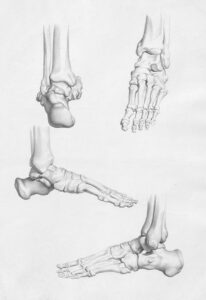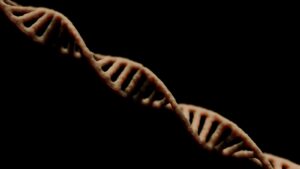Toenails are often taken for granted as a part of our anatomy. Though they may seem less important than other body parts, toenails serve functional and evolutionary roles that contribute to human health, protection, and even our evolutionary history. Much like fingernails, toenails are made of keratin, a protein that forms tough, protective surfaces on the skin and appendages. But why exactly do we have toenails, and what purpose do they serve in our daily lives?
This article explores the evolutionary origins, functional benefits, and biological significance of toenails. By understanding how toenails developed over time and why they persist in humans, we gain insight into their role in providing protection, aiding movement, and contributing to our evolutionary lineage. We’ll also examine how toenails relate to overall foot health and the mechanisms that help maintain their form and function.
The Evolutionary Origins of Toenails
From Claws to Nails: An Evolutionary Transition
Toenails, like fingernails, evolved from claws that were present in early mammalian ancestors. Claws were essential for survival in early species, as they provided crucial advantages in hunting, climbing, and self-defense. For many mammals, claws are vital tools for catching prey, digging, and protecting themselves from predators. However, as human ancestors began to evolve away from arboreal (tree-dwelling) lifestyles, our ancestors’ hands and feet gradually adapted to meet different needs.
The evolutionary transition from claws to nails is believed to have occurred in primates as they moved from using claws for climbing and grasping branches to relying on broader fingertips and toenails. Toenails, like fingernails, became flattened and less sharp, allowing early primates to use their fingers and toes more efficiently for precision tasks and weight-bearing activities. This transition provided benefits for gripping objects, balancing, and other fine motor functions that became more relevant as primates shifted from dense forests to more varied landscapes.
Today, many mammals retain claws, while humans and other primates have evolved flattened nails on both fingers and toes. In primates, including humans, flattened nails provide protection and support for delicate finger and toe pads, which are important for performing detailed tasks. This adaptation highlights the role that nails—both toenails and fingernails—play in offering structural support and protecting sensitive skin on the ends of the digits.
The Function of Toenails in Early Human Evolution
Toenails were likely valuable for early humans as they began to travel longer distances on foot. Toenails helped protect the tips of the toes from rough terrain, rocks, and uneven surfaces, reducing the risk of injury. This protective function would have been especially important for early humans who traversed rugged environments without footwear, making toenails an evolutionary advantage for survival.
In addition to protection, toenails may have contributed to foot stability. As humans evolved to walk upright, toenails provided a stable covering over the toes, allowing individuals to navigate uneven terrains more confidently. While early human ancestors may not have used toenails for the same purposes as claws, the shift from claws to nails contributed to the adaptability and endurance needed to travel long distances in search of food and shelter.
The Functional Role of Toenails in Modern Humans
Protection of the Toe Tips and Nail Bed
One of the primary roles of toenails in humans is protection. Toenails serve as a shield for the tips of the toes, covering the sensitive skin, nerve endings, and underlying tissues from external injury. Without toenails, the toe pads and nail bed would be more vulnerable to abrasions, impacts, and cuts, especially during activities that put pressure on the feet, such as walking, running, and jumping.
Toenails also protect against injuries from sharp objects, falling items, and impacts against hard surfaces. The hard keratin layer provides a buffer that absorbs some of the impact, reducing the risk of direct injury to the toe bones and soft tissues. In many ways, toenails act like miniature helmets for our toes, adding an extra layer of protection.
The toenail structure is also designed to support the toe, as the nail plate attaches firmly to the nail bed and underlying skin. This connection reinforces the toe’s strength, providing stability to the end of each digit. The protective role of toenails is particularly significant for people who engage in physical activities, as they prevent the delicate skin around the toes from injury, blisters, or other damage.
Enhancing Balance and Stability
Toenails may contribute to balance and stability by providing support for the toe tips, which help us maintain posture and adjust our footing on various surfaces. While toenails are not directly responsible for balancing, they reinforce the structure of the toe, ensuring that the skin and underlying tissue remain intact and stable during movement.
As part of the body’s balance mechanism, the toes play a significant role in distributing weight and adjusting to shifts in position. Toenails add firmness to the tips of the toes, preventing the skin from wearing down as we move. This added protection can help individuals maintain stability and prevent slipping, especially on rough surfaces or when climbing, walking on inclines, or stepping over obstacles.
Toenails also help prevent toes from bending too far backward, which could otherwise strain the toe joints and cause pain. By limiting excessive movement and providing a secure end-point, toenails enhance the functional stability of each toe, contributing to overall foot health and balance.
Supporting Fine Motor Function and Tactile Sensation
Toenails, like fingernails, play a role in fine motor function and tactile feedback. While fine motor skills are more associated with fingers, toes contribute to movements that require coordination, balance, and small adjustments, such as gripping surfaces with the feet or stabilizing the body. Toenails add structural support, allowing for greater sensitivity in the toe pads, which contain a network of nerve endings essential for tactile feedback.
The nerves in the toes provide information about the surface beneath our feet, including texture, temperature, and pressure. Toenails help stabilize the toe tips, which allows for more consistent contact between the skin and ground. This stability ensures that we can sense subtle changes in the environment, adjust our posture, and maintain balance, all of which contribute to safe and efficient movement.
The Role of Toenails in Foot Health and Hygiene
Toenails also play an important role in foot hygiene. The hard, durable surface of toenails helps protect the toe bed from dirt, bacteria, and fungi. The nail plate serves as a barrier that prevents foreign substances from directly entering the sensitive skin of the toe pads. By keeping the nail bed clean and healthy, toenails contribute to reducing the risk of infections and conditions such as athlete’s foot or fungal infections.
Maintaining healthy toenails through regular grooming, trimming, and cleaning is essential for foot hygiene. Long toenails can lead to painful issues, such as ingrown toenails, which occur when the nail grows into the surrounding skin. Proper toenail care is therefore essential for both comfort and health, as it prevents unnecessary complications that can affect walking, running, or other physical activities.
Why Toenails Are Unique and How They Differ from Fingernails
Structural Differences Between Toenails and Fingernails
While toenails and fingernails are composed of similar materials and serve similar functions, they differ in terms of growth rate, thickness, and durability. Toenails grow more slowly than fingernails, with an average growth rate of approximately 1 millimeter per month, compared to fingernails’ growth rate of 3 millimeters per month. This slower growth is due to differences in blood circulation and the relative lack of daily fine motor demands on the toes.
Toenails are also thicker and harder than fingernails, providing increased durability against the wear and tear associated with weight-bearing and frequent contact with the ground. This added thickness allows toenails to withstand the pressure exerted on them during walking, running, or standing, while fingernails are designed for tasks that require greater dexterity and flexibility.
Toenails and Self-Repair Mechanisms
Toenails, like fingernails, possess a unique ability to self-repair after injury, as they continuously grow from the nail matrix located beneath the base of the nail. When a toenail is damaged, the matrix produces new cells that push the damaged nail forward, gradually replacing it. This self-repair mechanism is especially useful given the higher likelihood of toenail injuries resulting from physical activity.
However, the slow growth rate of toenails means that complete regrowth of a damaged or lost toenail can take several months. In severe cases, toenail injuries can disrupt the nail matrix, leading to irregular growth patterns or permanent nail damage. Protecting toenails from impact and injury is important, as healthy toenails contribute to overall foot health and mobility.
Common Conditions and Health Issues Related to Toenails
Ingrown Toenails and Prevention
Ingrown toenails are a common issue that occurs when the edge of the toenail grows into the surrounding skin, causing pain, redness, and swelling. Ingrown toenails are often caused by improper nail trimming, tight footwear, or trauma to the toe. Left untreated, ingrown toenails can lead to infection, requiring medical treatment.
To prevent ingrown toenails, it is recommended to trim toenails straight across and avoid cutting them too short. Wearing well-fitting shoes that do not compress the toes can also help reduce the risk of ingrown toenails, supporting both comfort and nail health.
Toenail Fungus and Hygiene
Toenail fungus, also known as onychomycosis, is a common fungal infection that causes the toenails to thicken, discolor, and become brittle. Fungal infections are often contracted in warm, moist environments, such as public pools or gyms. Proper foot hygiene, including keeping feet dry and using antifungal treatments as needed, can help prevent fungal infections.
Toenail fungus can be persistent and difficult to treat, sometimes requiring antifungal medication or laser therapy. Maintaining clean and dry feet, along with regular toenail care, is key to preventing fungal infections and promoting healthy toenail growth.
Trauma and Toenail Damage
Toenail trauma, such as bruising or cracking from dropping an object on the toe or stubbing it, is another common issue that can affect toenail health. Trauma to the toenail can lead to subungual hematoma (bleeding under the nail) or even cause the nail to detach. Proper care, such as wearing protective footwear and keeping toenails trimmed, can minimize the risk of toenail injuries.
Conclusion: The Enduring Significance of Toenails
Toenails serve a purpose far beyond mere aesthetics. From providing protection to enhancing stability, balance, and tactile feedback, toenails play a functional role in maintaining foot health and enabling us to move efficiently. Evolved from claws in early mammalian ancestors, toenails highlight the adaptations humans have undergone as we transitioned to bipedalism and developed a lifestyle centered on endurance and exploration.
The evolutionary and functional significance of toenails demonstrates their contribution to human survival, balance, and overall well-being. While often overlooked, toenails are a reminder of the subtle ways in which our bodies are adapted to our environment, enabling us to navigate the physical world with resilience and efficiency. In the end, toenails continue to fulfill roles that are crucial to foot health, protection, and movement, proving their value in our anatomy and our daily lives.




